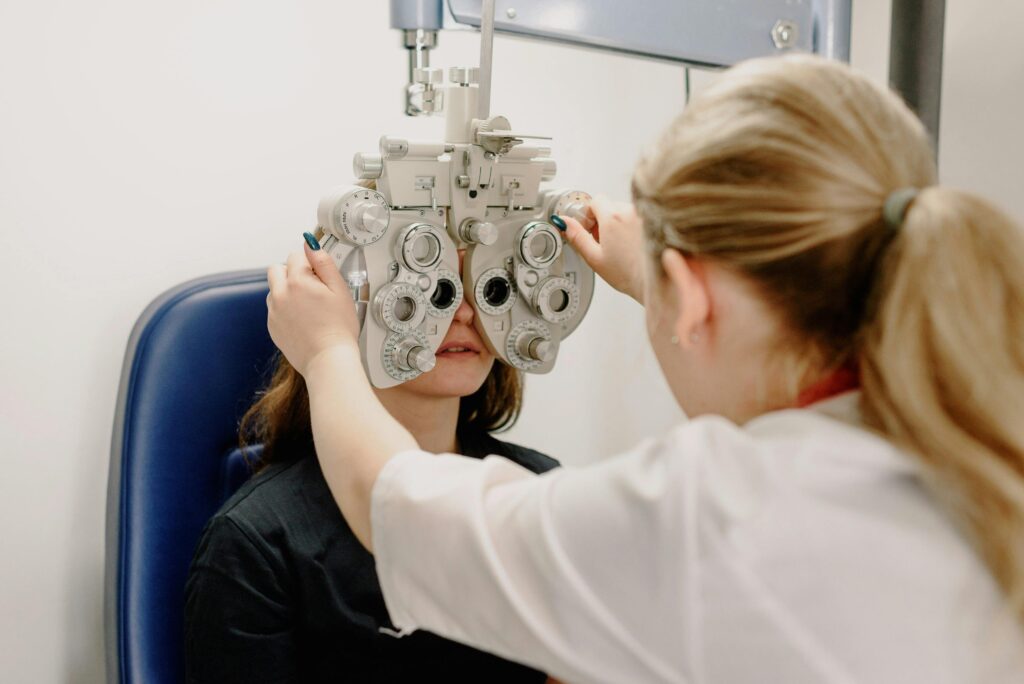What to Expect During Your Comprehensive Eye Check-Up?

Maintaining good eye health is essential for everyone. A comprehensive eye check-up helps detect early signs of potential problems and ensures that vision remains clear. Many people are unsure of what to expect during this routine process. Understanding each step can make the experience less intimidating and more beneficial. This article will explain the different stages of an annual eye exam, what the optometrist looks for, and how it helps protect long-term eye health.
Contents
1. Initial Health and Vision Screening
The first part of a comprehensive eye exam usually starts with discussing medical history and any current vision concerns. This step is important because many factors, such as family history or pre-existing medical conditions, can influence eye health. The optometrist may ask about general health, medications, and any noticeable vision changes.
Following this, a vision screening is performed. This involves reading letters from an eye chart to assess the sharpness of vision, both near and far. The results will help determine if prescription glasses or contact lenses are needed or if the current prescription needs updating.
2. Eye Muscle Function Tests
Healthy eye muscles are important for focusing, tracking objects, and ensuring both eyes work together effectively. During this stage, the optometrist may ask the patient to follow a small light or object with their eyes without moving their head. These tests can detect issues like lazy eye or double vision, affecting day-to-day activities such as reading or driving.
Proper muscle function is essential for keeping the eyes aligned. If any problems are found, treatment options may include special exercises or corrective lenses to help improve the condition.
3. Pupil Response Examination
Another critical part of the exam is checking how the pupils respond to light. The optometrist shines a light into each eye to see how the pupils react. Normally, pupils should shrink when exposed to light and enlarge in darkness. Abnormal pupil reactions can be a sign of underlying issues, such as neurological conditions or damage to the optic nerve.
This test may seem quick, but it provides valuable information about how the eye’s internal systems work and can uncover early warning signs of more serious problems.
4. Intraocular Pressure Measurement
Measuring the pressure inside the eyes, known as intraocular pressure, is essential for detecting conditions like glaucoma. During an annual eye exam at Pearle Vision, this test is conducted to catch early signs of glaucoma, which can lead to vision loss if untreated. The exam uses either a gentle puff of air or a device that touches the eye’s surface, ensuring that any potential issues are addressed before they become serious.
5. Retinal Examination
The final step in most comprehensive eye exams involves a close look at the back of the eye, specifically the retina. By examining the retina, blood vessels, and optic nerve, the doctor can detect signs of diabetes, high blood pressure, or age-related macular degeneration.
This exam part is essential for catching health issues that might not show symptoms yet. Though the dilation can cause temporary blurriness or sensitivity to light, it provides vital insights into overall eye health.
A comprehensive eye check-up is vital in preserving vision and eye health. From vision screening to muscle tests, pupil response checks, and retinal examinations, each step helps identify issues early on. Understanding what to expect during these check-ups ensures that individuals take proactive steps in caring for their eyes, preventing serious conditions, and enjoying clear sight for years.





